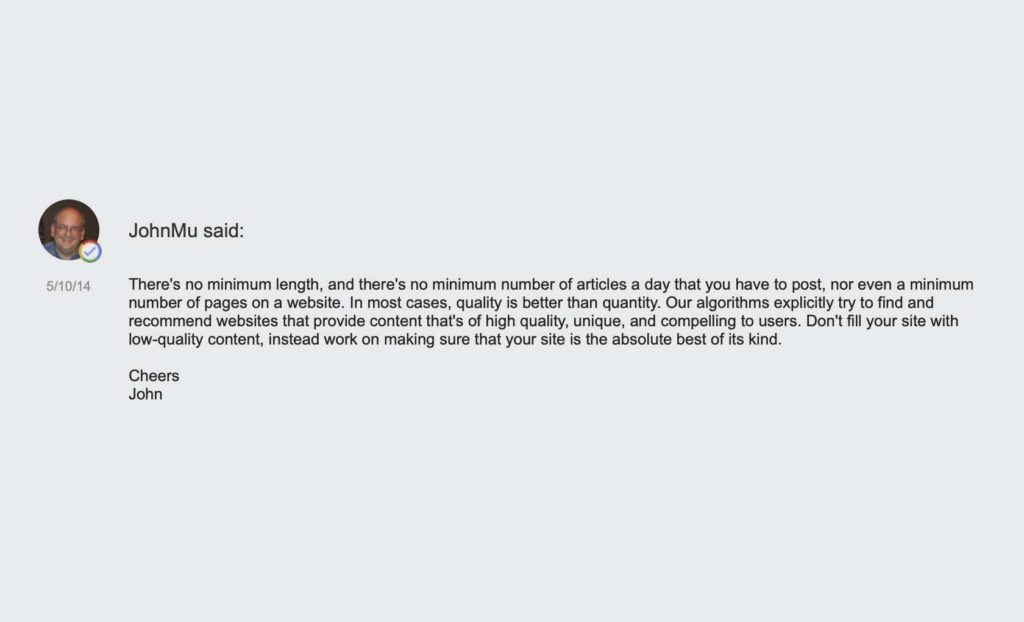Introducing Google Panda To The Core Algorithm

Content specialists take note: as of last month, Google Panda is now part of the core ranking algorithm. But what does that mean? How is the change different from before? And as content creators, do we need to be doing anything different now that Panda is part of the main event?
What Does Being Part Of The Core Algorithm Mean?
Previously, Panda was a spam filter, something applied after the core algorithm had meandered its way through ranking factors and key signals, coming in at the end to judge the overall quality of a site’s content. But with content and the value it provides to the user such an important part of Google’s guidelines, Panda has become increasingly crucial in determining which sites provide the best user experience. In January, this feeling peaked when Google announced Panda’s QA process would now be applied within that core, initial ranking verdict.
To simplify further, think of the change in baking terms. Panda used to be a cake topping (let’s say icing), adding a little extra to the finished product (the SERP results’ quality). Now, it’s part of the main recipe itself, and the whole cake (SERP) simply wouldn’t be possible – and wouldn’t taste good – without it.
How Is This Change Different From Before?
First of all, it’s an update to Panda that’s actually been 100% confirmed by Google:
“Panda is an algorithm that’s applied to sites overall and has become one of our core ranking signals. It measures the quality of a site, which you can read more about in our guidelines. Panda allows Google to take quality into account and adjust ranking accordingly.”
If you’re at all familiar with Google’s secretive release model this straightforward announcement may come as some surprise, although the news itself shouldn’t; Panda’s new classification has been a fairly long time in the making. The algorithm has been slowly updated through the years to be more and more competent at deciding a site’s performance based on its content, and finally it got to the point where Google has felt confident rolling it into the main recipe.
How To Optimise Content For Panda
But now that it’s part of the main event, what do content creators need to focus on to ensure they’re hitting all Panda’s bases? Has anything changed?
The short answer: Panda as part of the core algorithm doesn’t change how you should optimise for it.
It’s still a matter of producing the best quality content you can. This might all be old news to you (and if so, read it again anyway as a refresher) but with Panda’s status upgrade and re-entry into the limelight, it’s worth revisiting the main ways you can make sure your site’s content meets Panda’s standards.
Don’t Strictly Equate Word Count With Quality
It’s an easy formula to follow: approx. 250 x words = good content.
But while it’s a perfectly valid thing to say that we shouldn’t leave pages looking bare and devoid of any content, we should perhaps avoid the trap of going a step further and adding a strict word count to that. Panda doesn’t see it that way: because how can you tell whether 150 words, 500 words, or 250 words offer a better experience for the user?
Let’s focus instead on making every word on the page, no matter how many there are, count towards making the overall message of the page clear, readable and user-friendly. Quality over quantity: it’s so simple, even John Mueller said so:

Crosscheck Your Queries With What You Deliver
It’s always wise to get friendly with the data that Google gives you, because it’s often the only thing you’ve got when it comes to deciding whether or not your pages give your users what they want. Check the Search Console for your Search Analytics performance on at least a monthly basis (maybe even more if you’re getting a lot of traffic or there’s a hot topic/event you’re involved in) to see what kind of queries you’re being shown for by Google, and the clicks, CTR and positions associated with those terms.

Just last month, I provided training to a team of content creators – responsible for the help section of their site -who weren’t aware of all the data they had available to inform the creation of their informational content. A quick glance at Search Analytics identified a huge swathe of terms around a very relevant topic to their brand, with very low CTR and rank associated with the related queries. Another quick glance at the SERPs and their site indicated that the majority of content they had about this very important topic was user generated: and of very poor quality.
So, users were looking for help, and they quite obviously weren’t getting it from my trainees (if we counted the number of frustrated users complaining about it on the site, we’d have been there for hours). We remedied that by tweaking existing content to mention the topic in question, and we’re waiting to see results. I could almost guarantee they’ll be positive, since we’re doing exactly as Google Panda and its champion Gary Illyes wants:

Improve Rather Than Remove
Very often, the initial recommendation people make when auditing a site for Panda is the removal of all thin or low-value content. But in pruning too much, you could actually do more harm than good. Google has always been pretty clear about their preference for improving existing content before removing it:

This follows QC’s general modus operandi in that we like to take pages which have potential to improve, and focus our efforts on improving them as well as creating and enriching new pages of content. After all, it’s easier to start from an existing foundation than to claw your site up from nothing.
And when the content really isn’t worth improving in the short term? Consider de-indexing rather than deleting: it may be less traumatic for your site, and gives you breathing room to sort through and prioritise your improvements as you want.
What’s Next For Google Panda And Content Creators?
There you have it – Panda is now part of the core algorithm, meaning you should sit up and take note (as though you weren’t already). Don’t worry too much about falling afoul of Panda’s stringent QA guidelines; keep creating and improving your site’s content, focus on giving your user real value from their visit, and Google’s latest update won’t be a problem. It could even be the final push you need to get your content noticed.
Own your marketing data & simplify your tech stack.
Have you read?
I have worked in SEO for 12+ years and I’ve seen the landscape shift a dozen times over. But the rollout of generative search engines (GSEs) feels like the biggest...
As you will have likely seen, last week Google released the March 2024 Core Algorithm Update. With it, comes a host of changes aiming to improve the quality of ranking...
After a year of seemingly constant Google core updates and the increasingly widespread usage of AI, the SEO landscape is changing more quickly than ever. With this rapid pace of...


